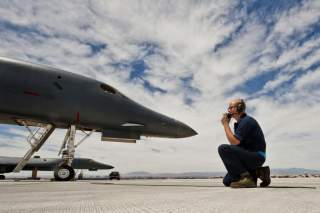The U.S. Air Force For Dummies
A strong, independent air power arm remains crucial to America's national security, a wave of recent critiques notwithstanding.
While the Navy and Marine Corps, unlike the Army, each have fixed-wing combat aircraft, they too employ airpower for defense of the carrier and defense of marines. This is a distinctly tactical purpose that creates a very different understanding of the air domain from that of airmen.
The Future Strategic Environment
In offering his critique, Farley offers little more than a cursory mention of the future strategic environment. It is here where the most compelling case for a strategically-focused Air Force is made. With the United States shifting its attention from Europe to Asia the campaign plan changes dramatically. Where war in Europe, or even the Middle East, was land centric, any conflict in Asia will focus on the use of strategic, not tactical, air and sea power.
The problem for the Navy is that, in a future regional conflict, it may be forced to operate far from the battlespace because of advanced area-denial capabilities. If required to operate from a distance, offensive naval aviation becomes irrelevant. This will leave the Air Force’s bombers as the primary aircraft capable of delivering kinetic effects.
Conclusion
While Farley’s critique of the Air Force may fall far short of the mark and serves as a distraction, it should have one positive outcome. Airmen should no longer take for granted that the broader public understands and supports the role of airpower in national security. If it requires misguided attacks from the ivory tower to encourage such appreciation for public understanding, so be it.
Dr. Adam Lowther is a Research Professor at the Air Force Research Institute.

